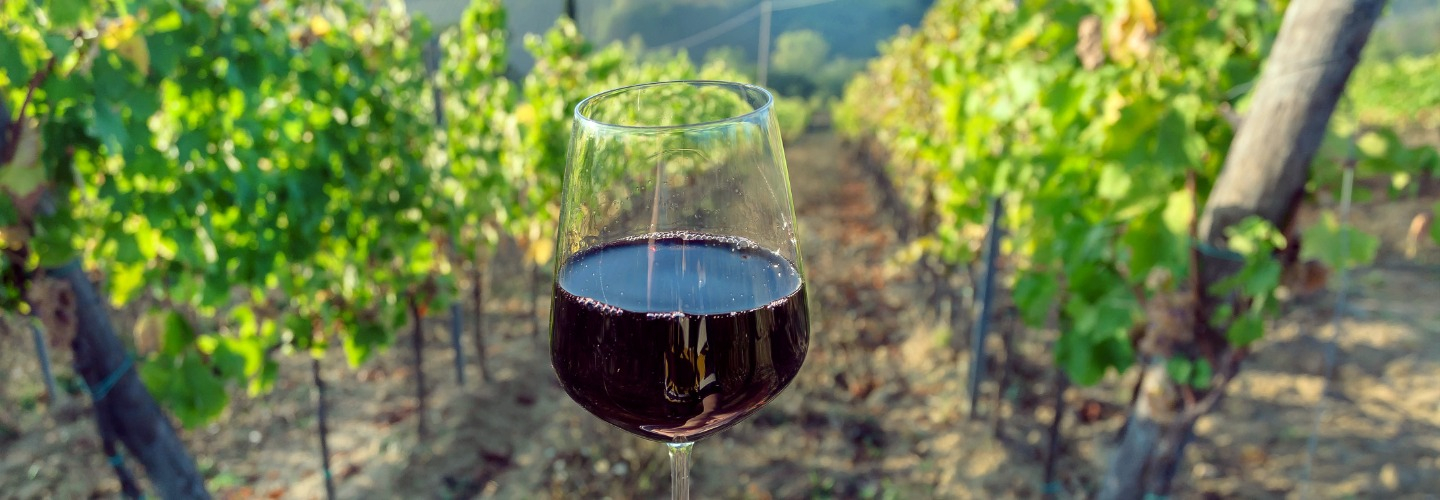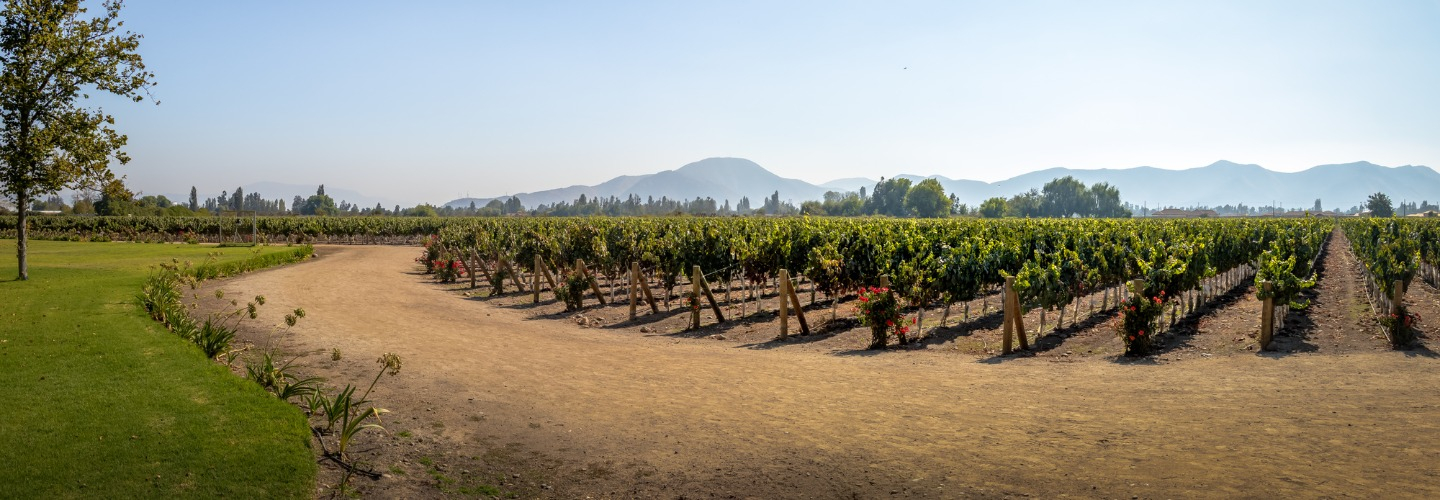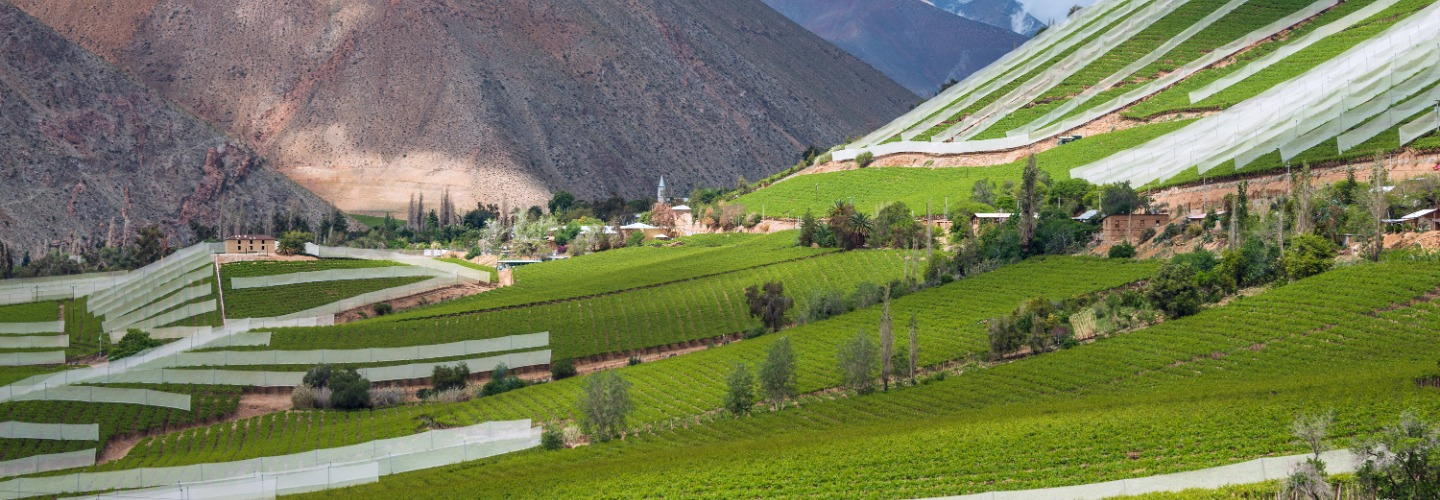Chile is the seventh largest wine producer in the world today. Stretching for over 4000 kilometres along South America’s western edge, it’s a thin but elongated country between the Andes mountains and the Pacific Ocean. The wine regions from north to south are classified into regions, as well as three larger growing zones: Costa (cooler coastal areas), Entre Cordilleras (warmer inland valleys) and Los Andes (mountainous regions). Let’s have a closer look at the wonderful wines of Chile.
How Did Chile Become a Wine-Producing Country?
The Chilean wine industry was heavily influenced by the French. When the phylloxera louse wiped out European vineyards in the 19th century, unemployed French winemakers migrated to Chile, bringing their grape varieties and know-how. They were optimistic about Chile’s climate and terroir, and it was their influence that shaped Chile’s wine market toward Bordeaux varieties. It wasn’t until the 1990s that much of the “Merlot” grown in the country was identified as Carménère- a nearly extinct grape variety of French origin.
What Grape Varieties Grow in Chile?
Chile grows predominantly Cabernet Sauvignon and Merlot, but its “signature” grape truly is Carménère. Carménère is related to Cabernet Franc, and does so well in Chile because of its long, sunny growing season. It produces full-bodied reds, high in tannins. Don’t be surprised to come across other grape varieties, though! You’ll also find Pinot Noir, Syrah, and País (a native grape variety) as red grape varieties, and Chardonnay, Sauvignon Blanc and Viognier as white grape varieties.

Overview of Chilean Wine Regions
Chile’s vineyards can be found over a range of 900 kilometres from north to south. The wine regions are divided into principal regions and sub-regions. In 2012, an additional classification was announced, based on their distance from the coast. Costa has coastal influences, Entre Cordilleras is a strip of land that runs between the Andes and the coastal valleys, and Los Andes are the mountainous vineyards. Let’s dive a little deeper into these zones and what each of them entails.

Costa – Chile’s Coastal Influence
The Costa area is the coastal strip of valleys that sit along Chile’s extensive shoreline – it’s over 4000 kilometres long! It was thought that Chilean wines flourished best on its plains and steep mountainous areas, but this all changed when Casablanca Valley wine made its debut in the early 1980s. Some other popular regions in the Costa zone include the Aconcagua region, which envelopes the Aconcagua, San Antonio, and Casablanca Valleys, the Coquimbo region with Elqui and Limarí Valleys, the Central Valley region with Rapel, Curicó and Maule Valleys and finally the South region with the Itata Valley.
While the coastline is significant, its effects on winemaking depend on the changing and cooling Humboldt Current. This current moves northward and cools the sea and neighbouring areas. It usually causes fogging that then shield the areas from the sun. This periodic fogging allows the grapes to ripen properly.
The coastline also affects the taste of the grapes, as the maritime influence adds minerality or a certain saltiness that comes from the soil being so close to the sea.
The wines from Chile’s coastal areas are usually fruit-forward with a delicious acidity that makes them balanced and elegant.
A great example is the Casa Viva Cabernet Sauvignon from the Casablanca Valley.

Entre Cordilleras – Generous Chilean plains
Although most of the Entre Cordilleras area consists of flatlands, it is wrong to assume that the whole region is entirely flat. From east to west, the plains are covered with mountains and rivers that constitute a rich and diverse terroir responsible for over 60 percent of Chilean wine production.
With Entre Cordilleras in the middle of the Andes Mountains and the Pacific Ocean, the area receives a cooling influence from both. This allows growers to ripen Merlot grapes and even the rare and finicky Petit Verdot. Some popular regions in the Entre Cordilleras zone include the Aconcagua region with the Aconcagua Valley, the Central Valley region with Maipo, Curicó, Rapel and Maule Valleys, and finally, the South region with the Itata, Bió-Bió and Malleco Valley.
Chilean wine received a boost when Spanish winemaker Miguel Torres arrived in the mountainous areas of the Curicó Valley in the early 1980s. He modernized wine production, making fresh and fruity wines. Many winemakers followed suit, giving wine exports a real boost. In the same region, further south, wineries in Cauquenes and San Javier are leading the charge to revive old vines to produce wine with a great expression of their region. A great example is the Santa Ema Select Terroir Reserva Cabernet Sauvignon which really allows Isla de Maipo to shine!

Los Andes – Chile’s Mountainous Vineyards
Nearly half of the entire range of Chile is covered in mountains, which affects everything in the country, including the wine. The Andes’ influence on climate is a large one. In the north, the Andes work with the cold Humboldt current to prevent cloud formation, reducing rainfall. In addition, the size and altitude of the Andes have also prevented diseases and pests such as phylloxera that have destroyed other vineyards around the world.
The Andes Mountains also form air masses that drop down into the valleys during the day. The ventilation and moving air currents provide a significant variation between the daytime and nighttime temperatures. This is important for the grapes to show off their characteristics. The terrain also plays an important role, with rockier areas providing more drainage and clay and soil material deposited alongside the mountain slopes and riverways.
The Andes region is well-known for some of the most renowned Chilean wines. The area produces wines with structure, great balance and character. A great example to try is the Haras De Pique Galantas, a blend of Cabernet Franc and Carménère.
The Chilean Wine Industry Today
Due to its altitude, mountainous areas, and government involvement, Chile has remained phylloxera-free, and vines don’t need to be grafted onto Phylloxera-resistant rootstocks. Chile remains isolated, with the Pacific Ocean on one side and the Andes Mountains on the other. The Quinta Normal Agriculture, a set of agricultural norms dating from 1841, regulates all grape-based agriculture and makes an effort to ensure no infested soil and vines are imported from other countries. Today Chile has some of the oldest vines with Vitis vinifera rootstock.
Chile’s dry climate makes it a perfect country to produce organic, biodynamic and sustainable wine. 75 Percent of all exported Chilean wine is, in fact, sustainably produced. The Chilean Wine Industry Sustainability Code is a voluntary standard that guides wineries in the challenge of working as sustainably as possible.
With the abundance of different types of terrain and the versatility of the land and climate in Chile, it is possible to make many different wine styles.
With the coastal regions best suited for cooler climate grapes, the inland valleys are known for their soft Bordeaux blends. The high-elevation and climates of the Andes area create wines that have greater structure and character, and so it is not surprising that winemakers are beginning to go back to the basics in an attempt to play around with these characteristics to create more natural and organic wines.
An interesting example is De Martino, employing the terracotta amphorae, returning to the rural and original winemaking traditions. They’ve even forgone the use of enzymes and certain yeasts, allowing the sugars and microbes in the grapes to ferment unaided with minimal intervention.
Here at WineCollective, we make sure to share our discoveries and rare finds with our members. Join us as we explore uncharted territories and discover wonderful grape varieties and unusual blends.
